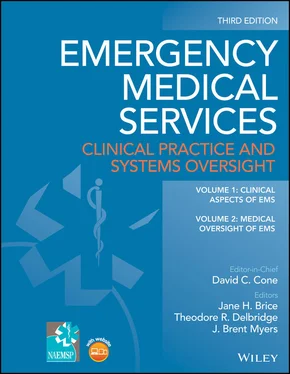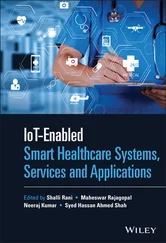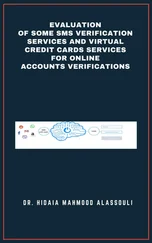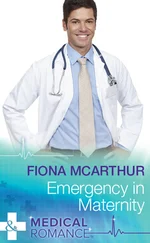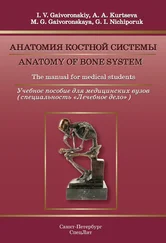Medical oversight considerations
Deterioration after complete airway obstruction occurs so rapidly that direct medical oversight by phone or radio likely provides minimal value. In cases of partial obstruction, direct medical oversight may provide useful guidance regarding management and receiving hospital options. The most important consideration is to educate EMS personnel to recognize signs and symptoms of partial and complete obstruction. As bystander intervention is essential in treating choking, EMS community outreach and education efforts are equally important. Prevention through activity with regulating authorities can lead to altering or relabeling objects or foods known to be significant choking risks [5, 6, 8, 9].
EMS physician presence at the scene may potentially play a role in select complicated choking cases. Patients with partial airway obstructions may prove to be difficult to manage, requiring a fine balance between supportive care and skilled airway intervention. An on‐scene EMS physician may facilitate selection of optimal treatment strategies. In the event of complete airway obstruction unresolved by basic techniques, an on‐scene EMS physician may be best qualified to perform advanced airway interventions, such as direct or video laryngoscopy and foreign body removal, rapid sequence intubation, or cricothyroidotomy. In all cases, the EMS physician’s value will be greatest if he or she is present at the earliest stages of the event—before complete airway obstruction or anoxic injury.
The most important controversies in choking management are the use of back blows and chest thrusts. The Heimlich Institute opposes both of these techniques. The American Heart Association (AHA) recommends these interventions if the Heimlich maneuver fails, and the American Red Cross (ARC) also advocates for both [10, 11, 25]. The AHA and the ARC recommend chest thrusts instead of the Heimlich maneuver for unconscious, pregnant, and obese patients and for children less than 1 year of age.
Critics note that back blows can cause the object to lodge deeper and waste valuable time better spent performing the Heimlich maneuver. In a recent study, the Heimlich maneuver was 86.5% effective at removing an obstruction [13]. Back blows may prove effective in children less than 5 years of age [17]. Chest thrusts are associated with significantly higher morbidity and mortality than the Heimlich maneuver and should probably be reserved for the most serious choking victims [26]. Some of these controversies may be answered as the MOCHI study is getting underway in Japan and scheduled to conclude in 2023 [27].
Medical directors can be most successful by being active and providing community education. ACLS‐ and Pediatric Advanced Life Support–trained public and EMS clinicians have improved choking survival rates beyond 95% [10, 11]. Expeditious recognition and treatment of choking are essential and should ideally be accomplished by bystanders. EMS personnel arriving on the scene should be prepared to manage a patient in extremis. Patients with partial airway obstructions may tolerate supportive care and rapid transport to the hospital. All choking victims should receive transport to the hospital for evaluation. An observational cohort trial underway in Japan, MOCHI, may provide answers to many of the controversies surrounding foreign body airway obstructions.
1 1 Igarashi Y, Yokobori S, Yoshino Y, Masuno T, Miyauchi M, Yokota H. Prehospital removal improves neurological outcomes in the elderly patient with foreign body airway obstruction. Am J Emerg Med. 2017; 35:1396–9.
2 2 Blaas V, Manhart J, Port A, Keil W, Buttner A. An autopsy approach to bolus deaths. J Forensic Leg Med. 2016; 42:82–87.
3 3 Brkic F, Umihanic S, Altumbabic H, et al. Death as a consequence of foreign body aspiration in children. Review Med Arch. 2018; 72:220–3.
4 4 Centers for Disease Control and Prevention Web‐Based Injury Statistics Query and Reporting System (WISQARS)]. Available at: https://www.cdc.gov/injury/wisqars/. Accessed August 1, 2020.
5 5 Committee on Injury, Violence, and Poison Prevention, American Academy of Pediatrics. Policy statement– prevention of choking among children. Pediatrics. 2010; 125:601–7.
6 6 Chapin M, Rochette L, Annest J, Haileyesus T, Conner K, Smith G. Nonfatal choking on food among children 14 years or younger in the United States, 2001‐2009. Pediatrics. 2013; 123:275–81.
7 7 Hemsley B, Steel J, Sheppard J, Malandraki G, Bryant L, Balandin S. Dying for a meal: an integrative review of characteristics of choking incidents and recommendations to prevent fatal and nonfatal choking across populations. Am J Speech Lang Pathol. 2019; 28:1283–97.
8 8 Kiyohara K, Sakai T, Nishiyama C, et al. Epidemiology of out‐of‐hospital cardiac arrest due to suffocation focusing on suffocation due to Japanese rice cake: a population‐based observational study from the Utstein Osaka Project. J Epidemiol. 2018; 28:67–74.
9 9 Taniguchi Y, Iwagami M, Sakata N, Watanabe T, Abe K, Tamiya N. Epidemiology of food choking deaths in Japan: time trends and regional variations. J Epidemiol. 2021. Published online ahead of print, June 13, 2020. doi: 10.2188/jea.JE20200057.
10 10 Olasveengen TM, Mancini ME, Perkins GD, et al. Adult Basic Life Support: 2020 International Consensus on Cardiopulmonary Resuscitation and Emergency Cardiovascular Care Science With Treatment Recommendations. Circulation. 2020; 116:S41–S91.
11 11 Topjian AA, Raymond TT, Atkins D, et al. Part 4: Pediatric Basic and Advanced Life Support: 2020 American Heart Association Guidelines for Cardiopulmonary Resuscitation and Emergency Cardiovascular Care Circulation. 2020; 116:S469–S523.
12 12 Karande S, Vaideeswar P, Muranjan M. Muddy clinical waters: a missed betel nut in the bronchus. BMJ Case Rep. 2015; 2015:bcr2015212919.
13 13 Soroudi A, Shipp HE, Stepanski BM, et al. Adult foreign body airway obstruction in the prehospital setting. Prehosp Emerg Care. 2007; 11:25–29.
14 14 Pavitt M, Nevett, J, Swanton L, et al. London ambulance source data on choking incidence for the calendar year 2016: an observational study. BMJ Open Resp Res. 2017; 4:e000215.
15 15 Heimlich HJ. A life‐saving maneuver to prevent food‐choking. JAMA. 1975; 234:398–401.
16 16 Pavitt M, Swanton L, Hind M, et al. Choking on a foreign body: a physiological study of the effectiveness of abdominal thrust manoeuvers to increase thoracic pressure. Thorax. 2017; 72:576–8.
17 17 Vilke GM, Smith AM, Ray LU, Steen PJ, Murrin PA, Chan TC. Airway obstruction in children aged less than 5 years: the prehospital experience. Prehosp Emerg Care. 2004; 8:196–99.
18 18 Kinoshita, K, Azuhata, T, Kawano, D, Kawahara, Y. Relationships between pre‐hospital characteristics and outcome in victims of foreign body airway obstruction during meals. Resuscitation. 2015; 88:63–67.
19 19 Sakai T, Kitamura T, Iwami T, et al. Effectiveness of prehospital Magill forces use for out‐of‐hospital cardiac arrest due to foreign body airway obstruction in Osaka City. Scand J Trauma Resusc Emerg Med. 2014; 22:53.
20 20 Blain H, Bonnafous M, Grovalet N, Jonquet O, David M. The table maneuver: a procedure used with success in four cases of unconscious choking older subjects. Am J Med, 2010; 123:1150.e7–9.
21 21 Luczak A. Effect of body position on relief of foreign body from the airway. AIMS Public Health. 2019; 6:154–9.
22 22 Patel P, Shapiro N. Portable, non‐powered, suction‐generating device for management of life‐threatening aerodigestive tract foreign bodies: novel prototype and literature review. Int J Pediatr Otorhinolaryngol. 2019; 118:31–5.
Читать дальше
